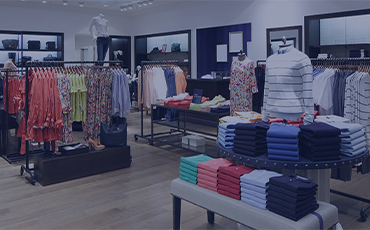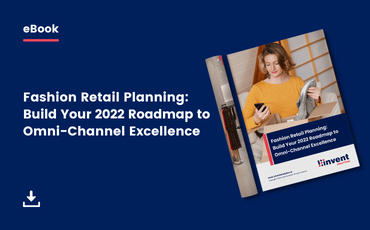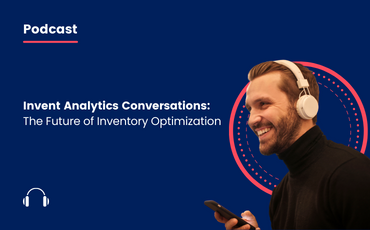
How to Forecast Demand Accurately for the Next Season: The Billion-Dollar Fashion Retail Question
Pre-season planning is one of the most complicated problems in forecasting. Every year, fashion retailers face the challenge of accurately predicting future demand for the next season.
What will be the baseline demand for a new item that will be introduced to the market six months from now on?
This is a billion-dollar question.
Fashion retailers need to recognize and accept that uncertainty is a fact of life in demand forecasting. The first step for retailers to handle this is by segmenting products using advanced prescriptive and predictive analytics such as clustering algorithms to segment products and defining a supply chain strategy for each segment.
When planning for items with high forecast error, there is very little information available on what will be prevailing fashion in the future.
Forecasting for basic items such as a white t-shirt is relatively easier than fashion items, as forecasts can be based on the sales history of similar items.
But consider forecasting for a new fashion item such as a floral printed neon dress. That’s when things get more complicated.
Fashion items have short life cycles, long lead times, and no historical data to draw upon. Rapidly changing customer preferences, new competition, macro influences, and ‘see now buy now’ trends make it incredibly hard to predict demand accurately in the long run. That’s why judging how many units a fashion retailer will need to order from the supplier becomes more like guesswork.
Guess wrong, and you will either run out of inventory -which is a deal-breaker for many consumers, or stock too much inventory that will need to be marked down later.
To our knowledge, there isn’t ‘one right way’ to accurately forecast demand for new items in fashion. But these days, data is plentiful and there are different approaches that retailers apply.
Here are 6 commonly used methods.
1-Relying on designers, buyers, and merchandisers’ opinion
Despite all the developments in AI-based demand forecasting, many fashion retailers still use a gut-based approach and trust their buyers, merchandisers, and designers to make pre-season forecasts.
Merchandisers read the market, buyers pay visits to production and design houses, and designers use their personal observations of what people will buy. In this method, long-term forecasts are limited by intuitions. This is more of an art and creativity-based method rather than an accurate science-based approach.
Besides, every designer or buyer can work on a narrow segment of the merchandise. For example, one can be working on the scarfs, whereas the other can be working on the crop tops. Therefore, using this method alone, fashion retailers can’t foresee the effects such as cannibalization or product substitution accurately.
2- Finding similar items in the past and projecting from there
Fashion retailers might have similar products that are close enough to make comparisons. Think of a retailer who wants to forecast demand for a ‘never-out-of-stock product’ like a black dress for the next season.
Typically, the retailer has access to the historical data of existing or previously sold black dresses for the past few years. Looking at previous years’ data can help in forecasting demand at sufficient levels for existing black dresses. But they can’t be 100% efficient in predicting demand for a new item. Because of the fast-changing nature of the fashion industry, it’s quite impossible to fulfill the demand of tomorrow’s consumers if forecasts are based solely on yesterday’s data of similar products.
3- Working with a trend forecasting agency
Unlike other retail industries, fashion is heavily trend-driven. Fashion retailers can work together with data-driven trend forecasting companies that offer predictive analytics on upcoming trends and products.
Using trend forecasting to predict fashion direction and analyzing social media and fashion week trends can be helpful in better demand planning. However, this method is more likely to work for short-term forecasting, as trends can change seemly overnight. And the question remains: is this data applicable and reliable for forecasting items that will be in the market 6 months or a year from now?
4- Using product attribute and image processing data
As fashion retailers don’t have detailed information about the actual products for the next season, they try to take advantage of image processing and attribution data to find similar items.
They use these items’ features, design attributes (such as patterns, color, fabric, materials, and so on) also visual similarities. And generate long-term forecasts using machine learning models.
5- Getting customers’ insights on upcoming fashion trends
Today retailers meet their customers through various channels, survey them to understand their preferences better, and use the input to identify the trends they’re likely to follow in the upcoming season. They then use this data for the next season planning.
It’s always good to use customers’ opinions, analyze where they are getting inspired and use this data to predict trends. This was an efficient method in the pre-AI and analytics revolution era. Today future demand cannot be modelled purely based on customer preferences and predictions alone.
6- Combining all the methods into one holistic approach
Next season forecasting has long been an art form, but with the growth of AI-powered advanced prescriptive, predictive, diagnostic and descriptive analytics, it now becomes more of a science. Although forecasting continues to be a complex task with a track record of high error percentages, one thing is clear: Fashion retailers need to continuously look for new ways and methods and become more efficient and agile in how they forecast demand for the next season.

Better pre-season forecasting, better planning
At Invent Analytics, we believe efficient pre-season planning is the first step towards becoming a profit-optimized business. Because it leads the way to better decision-making, planning and execution. Instead of using a stand-alone method or choosing between analytics vs. human, we recommend fashion retailers to use a combination of these 5 approaches.
To make efficient pre-season planning and generate more accurate forecasts, companies need to use all relevant insights and leverage AI and smart analytics capabilities to the fullest. They need to adjust their supply chain strategies, review demand bi-weekly and update their production plans accordingly.
Instead of committing to a specific product 6 months, 9 months or a year before the next season, they should focus on becoming more agile and responsive. By producing semi-finished items in small batches until they get better market signals and tailoring their supply chain strategies accordingly is a strategy that works for successful global fashion retailers.
Optimize to win
Even if retailers use a combination of the 5 approaches mentioned above, they still won’t be able to achieve high pre-season forecast accuracy.
To succeed in the long run, retailers need to re-architect their thinking and sharpen their focus on inventory optimization.
Did you enjoy reading this? You might also be interested in reading the second article of this series Pre-Season Planning: Why Successful Inventory Optimization is Vital in Fashion Retail.




